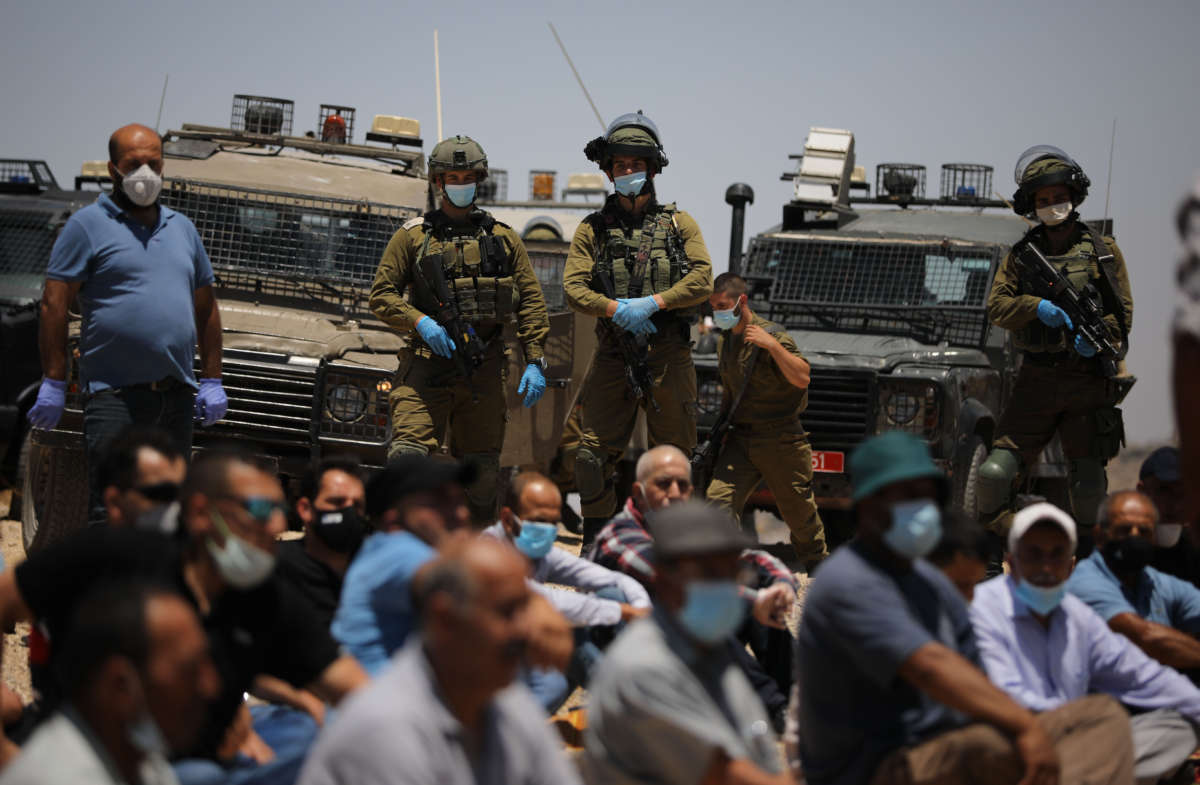A 2010 stock image of the MV Rhosus cargo ship, overlaid with an image from social media video of the explosion in Beirut, Lebanon, on August 4, 2020. Hasenpusch/picture alliance via Getty Images/Business Insider
Igor Grechushkin, the Russian owner of the ship that carried a huge cargo of explosives to Beirut, which exploded years later, was questioned by Cypriot police on Thursday, reports say.Grechushkin abandoned the MV Rhosus and its cargo of 2,750 tons of explosive ammonium nitrate in 2014. Lebanese authorities impounded the cargo until Tuesday's catastrophic explosion.
Igor Grechushkin, the Russian owner of the ship that carried a huge cargo of explosives to Beirut, which exploded years later, was questioned by Cypriot police on Thursday, reports say.Grechushkin abandoned the MV Rhosus and its cargo of 2,750 tons of explosive ammonium nitrate in 2014. Lebanese authorities impounded the cargo until Tuesday's catastrophic explosion.
Police said the businessman, who resides in Cyprus, was "very willing to come forward" for police questioning, according to In-Cyprus News.
Grechushkin is not suspected of any wrongdoing, since Lebanese authorities were response for the dangerous state the cargo was left in, Cyprus police spokesperson Christos Andreou told MailOnline.
Business Insider has been unable to reach Grechushkin for comment.
Cypriot police have questioned Igor Grechushkin, the Russian businessman whose ship carried the explosive cargo that devastated Beirut on Tuesday, according to news reports.
Grechushkin was the owner of the MV Rhosus, the ship that carried 2,750 tons of explosive ammonium nitrate, before abandoning it in Beirut in 2014.
Those materials were stored in Beirut's port for six years, before they detonated in Tuesday's catastrophic explosion, as Business Insider reported.
The 43-year-old is based in Limassol, Cyprus, according to multiple reports in local media there. The island state is a common haunt for wealthy Russians.
Lebanese authorities have placed numerous port officials — who were repeatedly warned about the dangers of storing the explosive materials — under house arrest pending an investigation, according to the BBC.
Cyprus police offered assistance to Interpol and Lebanese police after Grechushkin was identified as the former owner of the Rhosus.
A police spokesperson said that Grechushkin, a Cypriot resident, was "very willing to come forward," according to In-Cyprus News, an online news site.
Cyprus police spokesperson Christos Andreou told MailOnline that the interview lasted several hours. "He is not facing any charges, nor is it likely that he will," he said.
"The request came in late Thursday and we acted on it immediately. It was a list of questions that authorities in Beirut wanted Grechushkin to answer."
Andreou told the outlet that Grechushkin was not suspected of wrongdoing given that authorities in Beirut took charge of the cargo years ago and were responsible for storing it.
Police said the details of the interview, which have not yet been made public, will be passed to Beirut officials, according to Reuters. The police spokesperson did not identify the person interviewed to Reuters, but an unnamed security source said it was Grechushkin.
—Ayman Abdel Nour (@aabnour) August 5, 2020
The Siberian Times published a picture purporting to be of Grechushkin, posing on motorcycle. Business Insider has been unable to verify if the image is genuine.
The ship carrying the ammonium nitrate that blew up in Beirut was abandoned in 2014 by a Russian businessman, who has said nothing since the explosion
Mia Jankowicz
A 2010 stock image of the MV Rhosus cargo ship, overlaid with an image from social media video of the explosion in Beirut, Lebanon, on August 4, 2020. Hasenpusch/picture alliance via Getty Images/Business Insider
A cargo ship that brought 2,750 tons of explosive material to Beirut in 2013 belonged to Russian businessman Igor Grechushkin, the ship's former captain told Radio Free Europe.
The cargo was impounded in 2014 and stored there until it exploded on Tuesday with devastating effect.
Grechushkin abandoned the ship after it got stuck in Beirut, leaving the crew stranded, according to the captain.
Grechushkin now lives in Cyprus, the captain said. Cypriot authorities said they have not received Lebanese requests for help reaching him, according to a local report.
Business Insider has been unable to reach him for comment. At the time of writing, he had made no public statement about the explosion.
The cargo ship that brought 2,750 tons of ammonium nitrate to Beirut — which exploded Tuesday with devastating consequences — was abandoned in 2014 by a Russian businessman based in Cyprus, according to multiple reports.
Igor Grechushkin was named as the owner of the MV Rhosus by the ship's former captain Boris Prokoshev, in an interview with the Russian edition of Radio Free Europe.
According to Prokoshev, the Grechushkin now lives in Cyprus — a common destination for wealthy Russians.
Business Insider has been unable to reach Grechushkin for comment, and a LinkedIn profile with his name is inactive. CNN reported that its attempts to call him received no answer.
Grechushkin has not made any public comment about the explosion, which has so far killed at least 135 people and wounded 5,000 more.
The MV Rhosus was meant to take the ammonium nitrate from Batumi in Georgia — the former Soviet nation on the Black Sea — to Mozambique.
But according to Prokoshev, after they set sail the journey was not deemed profitable enough. The Rhosus detoured to Beirut port in late 2013 to take on more machinery, which Prokoshev objected was too heavy for the ship.
A map showing the ports of Batumi and Biera, the MV Rhosus' intended route, and Beirut, where it took a detour and remained. Google Maps/Business Insider
In Beirut, the ship was found to be unseaworthy and was barred from sailing further by inspectors. Some of the crew was released, but Prokoshev and three others were stuck there for 11 months, he said.
"We weren't paid a dime!" he told Radio Free Europe. "And [Grechushkin] didn't even buy food for us. We can say that he left us in a knowingly dangerous situation, doomed us to hunger."
Lebanese port officials took pity on the seafarers and fed them, Prokoshev said.
After a prolonged legal battle, Grechushkin paid for the remaining crew to be taken to Odesa, Ukraine.
But he abandoned the vessel and its explosive cargo. The ammonium nitrate was moved to port storage, where it stayed until it detonated on August 4, 2020, as Business Insider reported.
Prokoshev, a Ukrainian, said that he met Grechushkin in 2013 he bought the ship. The whole crew had been changed, and Grechushkin did not mention that this was due to non-payment of salaries, Prokoshev said.
The Siberian Times published a picture purporting to be of Grechushkin, posing on motorcycle. Business Insider has been unable to verify if the picture is genuine.
—The Siberian Times (@siberian_times) August 5, 2020
It is not clear where Grechushkin is now.
Grechushkin has had offices in the city of Limassol, the Cyprus Mail reported. The Cypriot interior ministry said he is not a citizen of Cyprus.
Police on the island said they have contacted Lebanon with offers of assistance, but have yet to receive any requests.








 Ein al-Hilweh, north of the Jordan Valley, is an empty area. There is a water spring there where Palestinians come to provide water for their flock. The Israeli military stated the area must be used for military training purposes. It is forbidden for sheep and people to enter the area now.SIREEN KHUDAIRI
Ein al-Hilweh, north of the Jordan Valley, is an empty area. There is a water spring there where Palestinians come to provide water for their flock. The Israeli military stated the area must be used for military training purposes. It is forbidden for sheep and people to enter the area now.SIREEN KHUDAIRI



